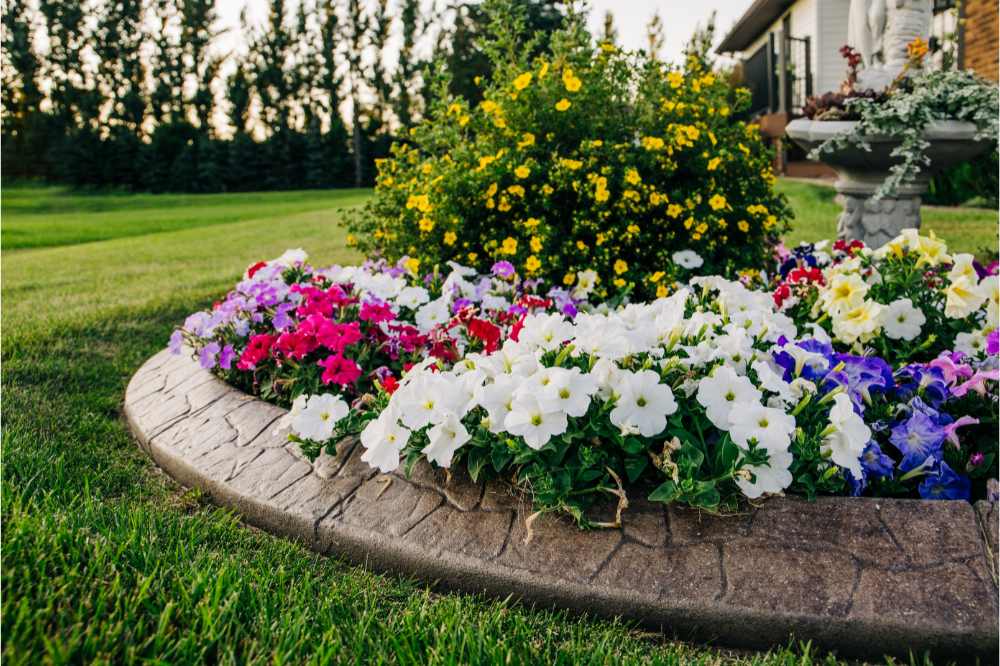How to Design a Cut Flower Garden in Your Raised Bed
Cut flowers are ideal for anyone who wants to express their inner florist. They are grown in gardens and harvested to make beautiful floral arrangements and bouquets. Designing a cut flower garden in raised beds is easier than ever. Here are five steps to create yours.

How to start a cut flower garden
1. Choose Your Location
The first thing to decide is where you want to put your raised bed. Most cut flowers thrive with full sunlight, so you should avoid shady areas. Depending on your climate, your garden might need frequent watering. In that case, you should place your bed near a garden hose or kitchen sink for easy access. Ensure the raised bed is sheltered from high winds or rain. Placing it in the middle of tall shrubs or with removable protection will elevate your flowers.
2. Pick Your Raised Beds
There are many types of garden beds out there. You may have one already or want to purchase your first bed. In either case, remember that the material will impact how long it will last.
Your budget will play a large part in the type of bed you can afford. A raised bed can cost hundreds of dollars, but you can make your own with wood or plastic containers.
Plastic containers are more likely to crack in a colder climate, damaging your flowers and requiring you to replace them. However, too-warm environments can cause the plastic to melt and wear down.
If you can afford them, vinyl raised beds are sturdy and durable options that can last a long time. These are not very environmentally friendly, but their long life does give them an advantage over weaker plastic options.
Wooden raised beds are eco-friendly and durable for gardeners who want their beds to have a natural aesthetic. Treated wood will help your bed resist rot and breakage. Gardeners who prefer an all-natural garden bed should consider cedar, which is naturally rot-resistant.
The last popular option is a galvanized metal raised garden bed. While unprotected steel could be susceptible to rust, it is durable and relatively sustainable. Galvanized steel has a protective food-safe coating that helps prevent rust and allows you to use the planters year after year.
Whichever bed you choose, keeping your flowers away from growing produce is important to prevent contamination from the gases those foods release.
3. Get the Right Soil
The best soil for raised garden beds is an equal combination of potting and raised or garden soil. This can help your flowers thrive in their environment.
Pour your soil evenly into your bed, ensuring enough space for your flowers to root. Remember that cut flowers generally do not need as much space as produce, but having more soil is better than having less. Larger flowers and perennial bulbs will typically require more room than smaller annuals.
Adding compost will provide extra nutrients and protection. Mix it with your soil to provide a strong foundation for your flowers to thrive.
4. Choose Your Flowers

A crucial step in creating a cut flower garden is deciding which flowers to grow. This is when the design process gets fun. Think of the bouquets you want to provide for yourself and others throughout the growing season.
Many cut flowers are easy to grow. Here are some top picks that will result in beautiful arrangements:
- Cosmos: These small flowers in the sunflower family look like daisies and come in various colors.
- Sunflowers: These fun beauties are a joy to look at throughout the day as they move to face the sun's direction. They come in many sizes and colors and are typically taller than other cut flowers.
- Echinacea: These flowers, also called coneflowers, are known for their colorful petals and protruding pistils.
- Zinnias: These beautiful blooms are large, plush and colorful.
- Dahlias: Each variety provides gorgeous bushy petals that stand out.
- Poppies: They have thinner petals that curve upward to form a wide, cup-like shape. They are colorful and dainty.
- Marigolds: These pest-resistant carnations are famous for their gold color but come in many varieties.
You can grow these flowers in your beds to make beautiful arrangements.
5. Plant Your Flowers for cut flower garden
There are a few things to consider before beginning the planting process.
There are two common cut flower planting arrangements.
The first is to plant in sections by species so you can quickly pick the blooms you want for each bouquet.
The second is to layer your cut flowers from shorter to taller. Stacking them this way prevents tall plants from blocking the sun from your smaller ones.
You should start with a few flower species, depending on the size of your bed. As you get used to growing them, you can purchase or build new ones to create a raised garden.
Designing Your Cut Flower Garden
Cut flowers make great landscaping and are perfect for anyone who wants to create floral arrangements. A
Taking the right precautions allows you to design the best-cut flower garden that will yield many beautiful blooms.
By Oscar Collins
Author bio: Oscar Collins is the editor-in-chief at Modded, where he writes about the outdoors.


